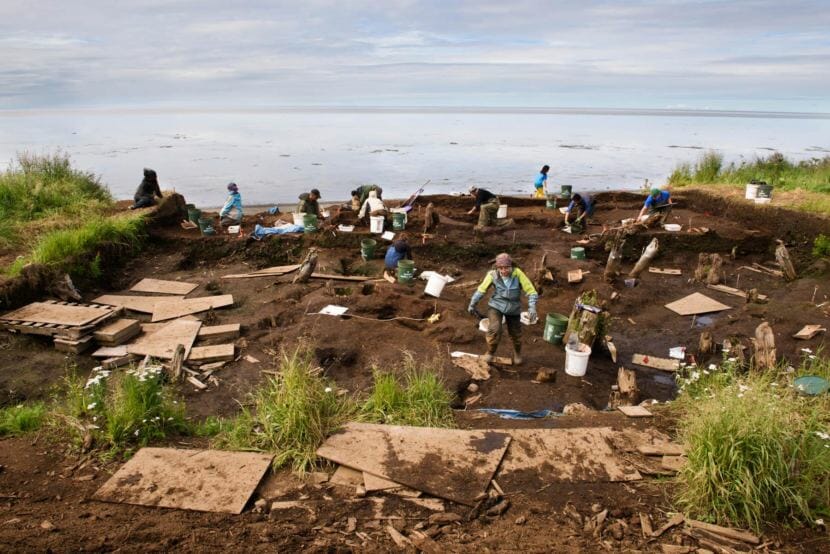
A national climate report says what many Alaskans already know: The state is warming twice as fast as the rest of the country. Rural and Alaska Native communities are the first to feel those impacts. For the Yukon-Kuskokwim Delta, the stakes are especially high because the region is home to the most tribes in the state.
Warren Jones is from the village of Quinhagak, which sits close to the Kuskokwim Bay. Just last week, he went fishing for trout. That’s not a normal activity for November.
“Our river should be frozen right now as of (Nov. 28),” Jones said. “Our river is still wide open. I think a couple of boats are out there.”
Jones is also the CEO of Quinhagak’s Qanirtuuq Corporation. The community is trying to save artifacts from an ancient village nearby because they feared their heritage would wash out to the sea from erosion, caused by climate change.
From his office window, Jones can see other climate impacts on the Kuskokwim Bay.
“The bay ice out there, I’m looking out the window, there’s still open water, there’s some white, small icebergs out there, but nothing thick enough to stand on,” Jones said.
Everything Jones has seen is cataloged in the recent National Climate Assessment. One chapter is dedicated to the impacts on indigenous communities, and another on Alaska. Scientist Sarah Trainor helped write the Alaska chapter. She said rural Alaska — and indigenous communities — will feel the brunt of the impacts from climate change.
“Because you are more connected to the environmental change, it affects you more directly,” Trainor said. “You travel on the rivers, so when it’s not frozen it matters to you. Your water source is right there, so if it gets contaminated it’s much more direct connection, which is why the rural communities are more affected.”
About 87 percent of Alaska Native communities are experiencing erosion. In the Y-K Delta, residents rely on rivers freezing over so they can travel to other villages by snow machine or car. And so they can hunt and fish safely in the winter.
Trainor said poor communities will struggle the most from climate change. They’ll see higher infrastructure costs and more threats to their food supply.
The Y-K Delta is the poorest region in Alaska. And its remote communities depend heavily on subsistence.
Some villages are also facing relocation. Newtok is the village that’s closest to being able to relocate, and it will cost them millions of dollars to move.
Jones said that all the villages will have to move someday.
“I suggest the villages start collecting data for erosion protection, because it’s going affect them sooner than later,” Jones said.
But he adds the Yup’ik culture has always adapted to a changing environment. And this is just the latest adaptation in a millennia of them.
